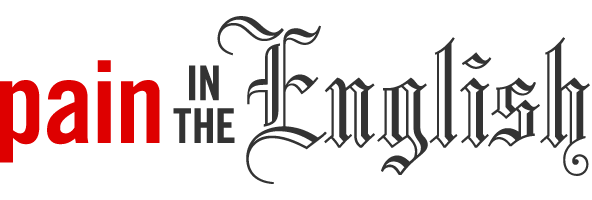Proofreading Services Retired
We’ve officially closed our proofreading services. You can probably guess why. With AI tools like ChatGPT now doing the job for free (and instantly), the demand for human proofreaders has all but vanished. If you still prefer a human touch, you're part of a rare—and shrinking—breed. We're now back to our roots: a forum for nitpicking the finer points of the English language. Thanks for your past support. We appreciate it.
Submit your question here.
Latest Posts : Punctuation and Mechanics
In informal online writing, such as blogs or e-mail, it has become a convention to include an emoticon, particularly a smiley-faced emoticon, to indicate that a comment is not intended to be interpreted literally or taken seriously. Technically speaking, I don’t think emoticons can be considered punctuation, because they generally provide a meaning of their own, rather than simply organizing or emphasizing text. My question is this, when including a smiley-faced emoticon--such as :)--at the end of a side comment in parentheses (dare I provide an example here? :)), do you: allow the closing parenthesis in the emoticon do double duty as a punctuation mark; allow the closing parenthesis of the emoticon run up against the closing parenthesis of the parenthetical statement, creating a doubled chin effect; put an otherwise inexplicable space between the emoticon and the closing parenthesis; or avoid the situation at all costs by rearranging the statement or supplying a different emoticon with a similar meaning (i.e., reword to avoid awkwardness)?
Here are some examples of each of the four solutions I provided:
1. (dare I provide an example here? :-) 2. (dare I provide an example here? :-)) 3. (dare I provide an example here? :-) ) 4. (dare I provide an example here? :-D)
Keep in mind that many programs will substitute the emoticon with an actual image of a smiley face (not that we should ever allow language to evolve to handle quirks of word processors).
What are these things called and when do you and do you not use them? I seem to see a great deal of overuse in advertising.
We always used to call these { } “wavy brackets.” Are they ever legitimately used in non-mathematical writing as, say, within-a-sentence punctuation?
When do I use colon and semi colon within a sentence?
I tend to use the posessive S when you would actually bother to sound out the extra letter. In my head I hear the posessive “Jones’s” as “Jons-zz”
I also had a cat named Socks. If his name were to be made posessive, I wouldn’t put the extra S sound, so it’d just be “Socks’ ”
This is a little punctuation quirk I’ve picked up over the years. I doubt I’m correct. What’s the proper rule on this?
My co-worker and I are having a fight over the correct end punctuation for items in a bulleted or numbered list. An example of this type of list could be a set of instructions for filling out an expense report form:
- Employee’s full name - Amount - If you entertained a client for the Davis deal, write client’s name and company next to the amount. - Job code (if applicable) - If you have no code assigned to your job, write PENDING in the space.
She says you must always use a period after each item, regardless of length. I say you must use a period only if the item is a complete sentence, and that if some of the items are sentences and some are not, the entire list must be rewritten to make it consistent. Yet another co-worker holds that you must never use a period after list items. We can’t all be correct (and maybe none of us are!).
This issue is killing me. I know that when writing dialogue, double quotation marks are used, as in,
“The road is icy and wet,” he said.
However, when putting quotation marks around a single word or phrase intra-sentence, what is the correct procedure? Especially if the usage is referring to some sentiment of sarcasm or a sort of contempt. I know that if it is a direct quotation from a person or book, magazine, etc., double quotes are used.
Should it be:
For ‘security’ reasons I was not allowed to bring my cell phone into the concert hall.
OR
“security”
I mean, I suppose this is a direct quotation of the person who said it was for security, but in that case, when are single quotation marks used?!
What kind of an inverted apostrophe should be used before n? Strictly speaking, I think it should be tail pointing downwards. But for reasons of aesthetics is it okay to use the one with the tail upwards?
What is the difference between a hyphen, an N-dash and an M-dash? How do you properly use them?
I know that you are supposed to put one space after a period if you are using a word processor, and two spaces if you are using a typewriter. But this doesn’t make sense. A space on a typewriter is wider than a space on a word processor (though it depends on the font you are using.). So, why would you put two spaces on typewriters?




